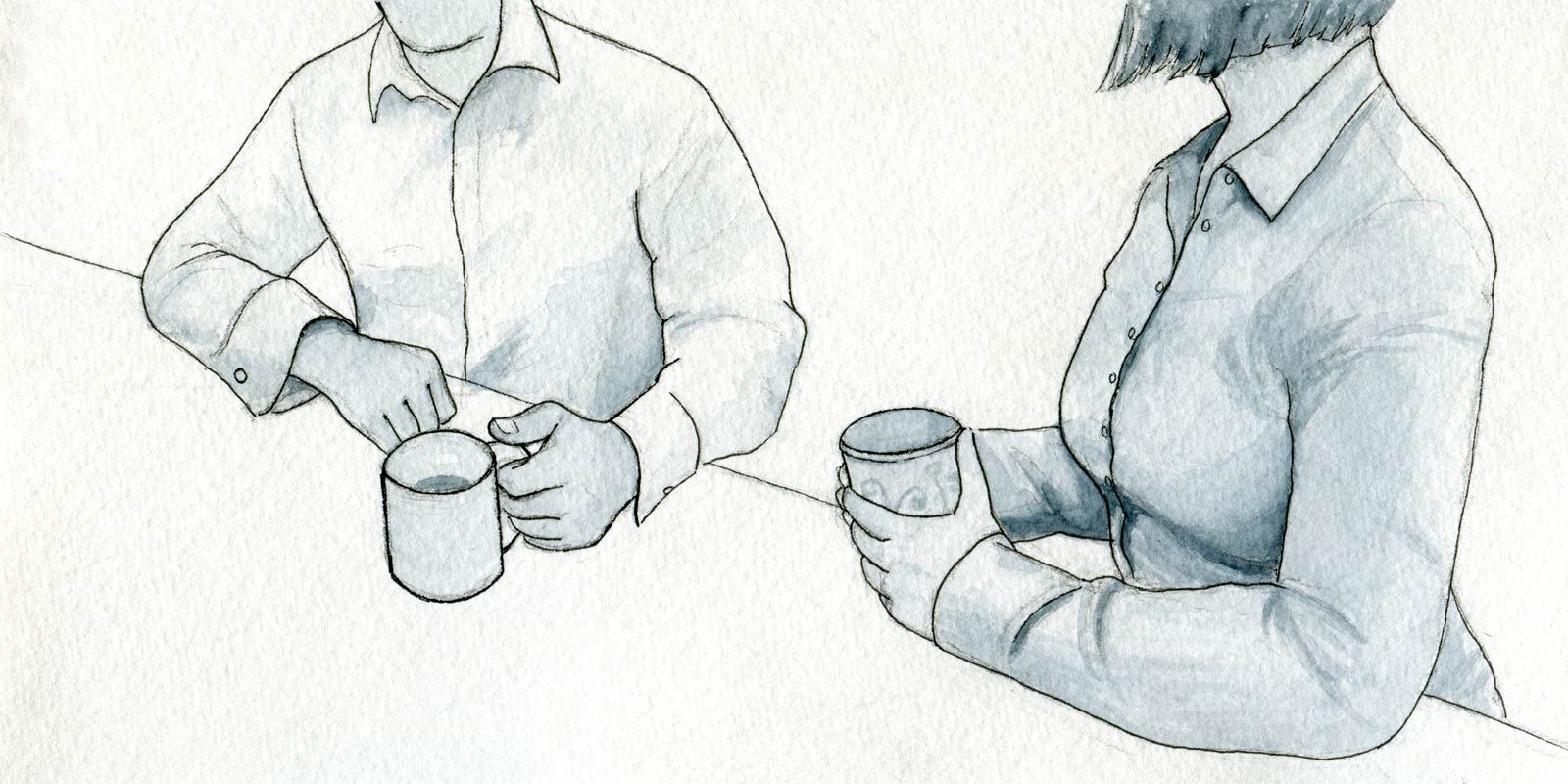We’re all time-constrained at work. We scan our email. We set specific times to meet. We have conversations with actionable next steps. In this kind of regiment we each track our own time and goals, and can feel the pressure to keep moving.
Sometimes the best thing to do is to pause, and let others take the conversation forward.
Make space for the tentative
When you’re here…Meeting with your product team
Try this pause… What’s on your mind? What should we be thinking about?
Pausing to make space for questions or thoughts is beneficial even with the most well-functioning product team.
One of the more surprising experiences I had when joining a new team happened in a staff meeting. Elliot Shmukler, the product management VP for the Core team at LinkedIn, held a bi-weekly strategy meeting with a large group with many senior leaders. At the meeting he’d leave the last 10-15 minutes open-ended, and would ask if anyone had questions, rumors, or anything to discuss.
That’s not unusual in itself. What was unusual was just how long he and the team would pause. I’ve been in meetings where this kind of question is asked, and usually after a quick scan of the room, the meeting will end there if nothing pops up within those 5-10 seconds. At these staff meetings, the pauses were much longer. I wish I’d timed it; they probably weren’t more than 20 seconds, but they were long enough to look around, pause, and then start thinking through whether there was anything to consider.
Someone would eventually, tentatively, mention something that we would then discuss. Sometimes they were sensitive topics. Other times they were observations about things in the news. The discussions we had from them were always insightful.
Pausing like this can be a challenge in a heavily collaborative environment, where many short, focused conversations abound. Sometimes I’ll have two or three conversations on the way to and from the bathroom. Knowing when to talk it through a matter right away, and when to find a different time or group to discuss it, is an art. It’s common to redirect conversations to happen “offline”.
That efficiency makes these pauses even more important. If everyone always seems busy, you don’t want to bother them except when matters are urgent. Pausing makes space for uncertainty and speculation that could be easily cleared up through discussion.
Listen up
When you’re here…Meeting with your peers
Try this pause…How can we be more effective? What can we do better?
Pausing to discuss what’s happening now can feed into product strategy. What about when you meet with peers who are working on different products? Look towards the common denominator – what you do – and make the space to discuss how to become more effective. Steve Johnson, the director of LinkedIn’s UED team, recently held an All Hands meeting with us recently almost exclusively focused on this kind of Q&A. The following two things in particular stood out to me.
New team members are especially important participants in this kind of conversation, not only to learn more about the team, but also to reflect the current view back to the team. They come with a fresh perspective, and will be both observing and absorbing a lot. They will also be watching for signals about team culture…so they may hesitate to ask questions until they’re sure of the right approach or venue.
It may take one or two current team members to step up with open-ended questions, and potentially uncomfortable or risky topics can be powerful signals about team transparency. Sometimes the leader may need to start themselves, and in the absence of questions, share an interesting fact or piece of news to start the conversation.
Who gets chosen to answer questions is an important signal about who is currently a decision maker or point of contact. That’s informations that may not be obvious from the reporting structure. It also may have changed, so that is also a way to raise awareness about who’s working on what now. This is a great time for leaders to shine light on people within their teams, and also take ownership of next steps.
Efficiency helps collaboration: maximizing your time, and being precise in your questions, makes it easier to plan your work. Spend long enough doing that, though, and it can be hard to shake that habit of compartmentalizing your interactions with people. You’ll miss out on other types of insights and connections. Every now and then, focus less on filling a void, and more on making space. Pause and allow for a little silence.


Leave a Reply